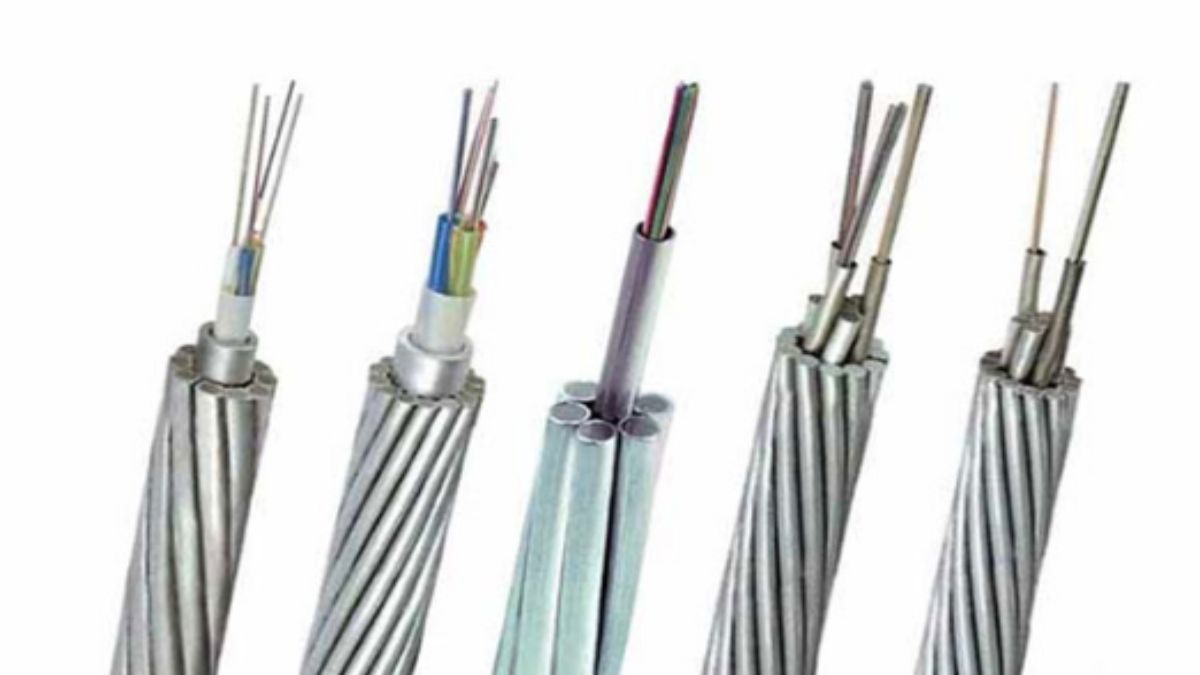Introduction
In the realm of modern power transmission, the integration of communication capabilities into infrastructure is paramount. The Optical Ground Wire (OPGW) cable stands at the forefront of this evolution, serving a dual purpose: grounding and high-speed data transmission. This guide delves into the intricacies of OPGW cables, offering network engineers a thorough understanding of their design, benefits, and applications.
What Is an Optical Ground Wire (OPGW) Cable?
An Optical Ground Wire (OPGW) cable is an advanced composite cable designed for overhead power lines. It combines the functionalities of traditional grounding conductors with the capabilities of optical fiber communication. Typically, OPGW cables are installed at the top of transmission towers, providing a pathway for lightning strikes to safely reach the ground while simultaneously facilitating high-speed data transmission for utilities. AFL Global+3Wikipedia+3Wikipedia, la enciclopedia libre+3
Construction and Design of OPGW Cables
OPGW cables are meticulously engineered to withstand the mechanical stresses imposed by environmental factors such as wind, ice, and electrical faults. The construction typically involves a central core of optical fibers encased in a protective layer of aluminum and steel wires. This design ensures both the mechanical strength required for overhead installations and the protection of the sensitive optical fibers. AFL Global+2AFL Global+2TeleTechno Comunicaciones+2Wikipedia
Key Features and Benefits
1. Dual Functionality
OPGW cables serve a dual purpose: they act as grounding conductors, protecting transmission lines from lightning strikes, and as communication pathways, enabling high-speed data transmission for utilities. Wikipedia
2. High Mechanical Strength
Designed to endure harsh environmental conditions, OPGW cables exhibit high tensile strength, making them resilient against mechanical stresses such as wind and ice loads. Wikipedia+5inlinkopgw.com+5AFL Global+5
3. Enhanced Protection
The robust construction of OPGW cables provides excellent protection for the optical fibers, ensuring reliable performance even in challenging conditions. AFL Global+2inlinkopgw.com+2AFL Global+2
4. Compatibility with Smart Grid Technologies
OPGW cables facilitate the implementation of smart grid technologies by providing a reliable communication backbone, enabling real-time data exchange between various components of the power grid. Wikipedia
Installation Considerations
Installing OPGW cables requires careful planning and execution. It’s essential to coordinate the lengths of cable with the spans between transmission towers to prevent waste. Additionally, weatherproof splice boxes are installed on towers to join fibers between lengths and to transition from OPGW to outside plant fiber-only cables. Wikipedia
Applications of OPGW Cables
1. Utility Communication Networks
OPGW cables are extensively used in utility communication networks, providing a reliable medium for data transmission between substations and control centers.
2. Smart Grid Implementation
The integration of OPGW cables supports the deployment of smart grid technologies, enhancing the efficiency and reliability of power distribution systems.
3. Distributed Temperature Sensing
OPGW cables enable distributed temperature sensing, allowing utilities to monitor the health and performance of power lines in real-time, facilitating early detection of faults or potential issues. AFL Global+2Wikipedia+2AFL Global+2
Conclusion
The Optical Ground Wire (OPGW) cable represents a significant advancement in the field of power transmission, offering a solution that combines grounding and communication functionalities. For network engineers, understanding the design, benefits, and applications of OPGW cables is crucial in leveraging their full potential to enhance the efficiency and reliability of power transmission systems.Wikipedia+1Wikipedia, la enciclopedia libre+1
Frequently Asked Questions (FAQs)
1. What is the primary function of an OPGW cable?
OPGW cables serve a dual purpose: they act as grounding conductors, protecting transmission lines from lightning strikes, and as communication pathways, enabling high-speed data transmission for utilities.Wikipedia+1inlinkopgw.com+1
2. How does the construction of an OPGW cable contribute to its performance?
The robust construction of OPGW cables, including a central core of optical fibers encased in protective layers of aluminum and steel wires, ensures both mechanical strength and protection of the sensitive optical fibers.Wikipedia+1AFL Global+1
3. Can OPGW cables be installed on existing transmission lines?
Yes, OPGW cables can be retrofitted onto existing transmission lines, providing an efficient means to enhance communication capabilities without the need for additional infrastructure.inlinkopgw.com
4. What are the environmental considerations for OPGW cable installation?
Installation of OPGW cables requires careful planning to account for environmental factors such as wind, ice, and temperature variations, ensuring the cable’s performance and longevity.AFL Global
5. How do OPGW cables support smart grid technologies?
OPGW cables provide a reliable communication backbone, enabling real-time data exchange between various components of the power grid, facilitating the implementation of smart grid technologies.Wikipedia
6. Are there different types of OPGW cables available?
Yes, various designs of OPGW cables are available, including AlumaCore and CentraCore, each offering unique features to meet specific installation requirements. AFL Global+2AFL Global+2AFL Global+2
7. What is the role of optical fibers in OPGW cables?
Optical fibers within OPGW cables enable high-speed data transmission, supporting utility communication networks and smart grid implementations.
8. How does OPGW cable installation impact existing infrastructure?
OPGW cable installation is designed to integrate seamlessly with existing transmission line infrastructure, enhancing communication capabilities without significant modifications.
